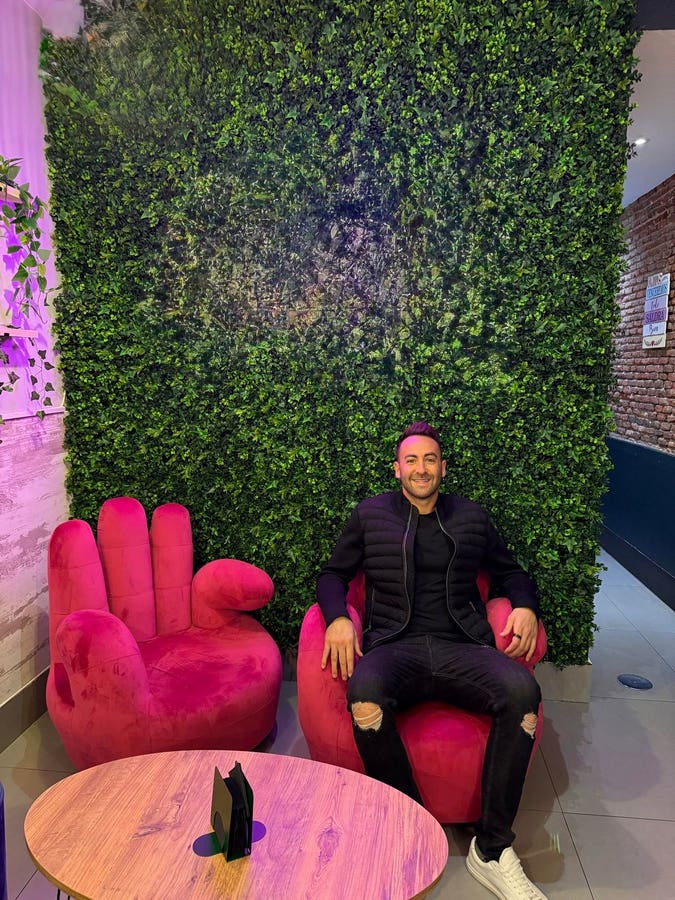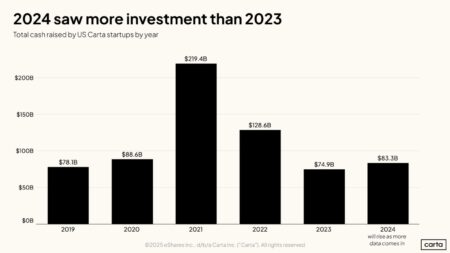With the wedding season coming up, many couples are now hunting for the perfect engagement ring. Increasingly, they are turning to lab-grown diamonds—made by compressing carbon at high-temperatures–which cost significantly less than traditionally mined versions. Lab-grown diamonds are expected to make up 21% of all diamonds sold this year, according to data from Statista.
Jesse De Leon has been on the front lines at Liori Diamonds, based in New York City. His business started out selling natural diamonds but transitioned to lab-grown diamonds in 2021. “We saw an emerging market trend and took a leap of faith,” he says.
Since then, the company has grown to a one-man operation to seven team members in New York City and Miami, where it opened a new showroom in August 2023. The company had just under $7 million in annual revenue in 2023, according to De Leon.
“The demand for lab-grown diamonds is only increasing, and we’re proud to be at the forefront of that movement,” he says.
General Electric created the first-lab grown diamonds in the 1950s, touching off several decades of research around the world, according to the International Gem Society, an online gemology community. In the 1980s, scientists found ways to improve on a game-changing production method called chemical vapor deposition. After many years of industry experimentation, the method became commercially viable. With the quality going up, traditional jewelers gradually began including lab-grown diamonds in their collections in recent years.
“They are chemically and optically identical to natural diamonds,” says De Leon. “You cannot tell the difference with the naked eye; it’s impossible. The only difference is that one is made in a lab, and the other is mined from the earth. “
At the same time, consumer demand rose. Some couples were looking for sustainable and ethical alternatives to traditional diamonds, to avoid inadvertently purchasing “conflict diamonds”—those mined in war zones to fund violent conflicts.
Then inflation and high housing costs hit, leading many couples to look for affordable but still high-quality alternatives to traditional diamonds. “There are so many financial burdens when you’re starting your adult life—marriage, housing, student loans,” says De Leon. Some did not want to turn to diamond substitutes, like cubic zirconia.
That touched off a surge in popularity for lab-grown diamonds. Because these synthetic diamonds can be produced more quickly than traditional ones—which can take millions of years to form—and in controlled environments, the cost of making them is lower. They typically sell for 50-70% less than traditional diamonds, according to Sebastian Charles Auctions. That price differential increases as the value of a diamond goes up, the auctioneer has found, with a 3-carat, lab-grown diamond typically costing about $10,000, versus a natural one selling for $40,000 or more.
That said, the diamond industry has faced some headwinds since 2022, with overall diamond prices declining, and the market for lab-grown diamonds flooded with competition. Several factors have helped the company to grow, despite these challenges:
Finding a niche within a niche.
Keeping in mind the preferences of its target consumers, Liori Diamonds opted to specialize in stones rated D, E or F, the equivalent of traditional diamonds priced from $35,000 to $100,000.
Within this niche, De Leon’s business partner Avi Aranbaiev focused on designing original, trendy styles. “That’s been a major driver of our success,” says De Leon. His designs are available for a range of budgets, with the company’s engagement rings ranging in price from the 1-Carat “Brilliant Petite Infinity Twist Micropavé” for $1,650 to the 18-Carat Emerald Cut Micropavé Lucida Set Masterpiece” for $117,500.
Putting buyers at ease.
As consumers gradually became more comfortable buying lab-grown diamonds online during the pandemic, De Leon saw opportunity. However, with many potential buyers concerned about being misleading operators in the industry, he knew it was important to prioritize authenticity. Liori Diamonds relies on certification, mostly by the Gemological Institute of America, he says. The company has also sought third-party validation. For instance, it has 159 5-star reviews on Trustpilot, a review site where buyers and shoppers can post reviews, and merchants are not allowed to remove reviews they don’t like.
Mastering social media.
Liori Diamonds also tapped De Leon’s knowledge of digital marketing, honed during his work in the jewelry industry, to attract customers quickly. It has built 291,000 Instagram followers and creating TikTok videos with millions of views. “We transitioned the entire business to digital,” says De Leon. “That allowed us to scale efficiently because online marketing provides measurable data.”
Preventing e-commerce fraud.
One risk to online entrepreneurs selling high-end merchandise is losses due to fraud. De Leon says the company has averted that so far, using Eye4Fraud, a fraud-protection tool for e-commerce merchants. “They verify a buyer’s IP address, email, and phone number to ensure everything matches,” he says.
Build long-term customer relationships.
Although many of De Leon’s customers are looking for engagement rings, many eventually make other purchases. That is helping the company continue to grow. “Once someone buys their first piece, they see the clarity and quality,” he says. “That usually leads them to buy more—first an engagement ring, then a tennis bracelet, then a necklace.”
De Leon is doing all he can to ensure that their interest continues to percolate. “We’re continuing to expand and educate the market about lab-grown diamonds,” he says. “People often assume lab-grown diamonds are fake, but they’re not. The best metaphor in our industry is: buying a mined diamond is like hiking to the top of a mountain for ice when you could just get it from your freezer.”
Read the full article here











